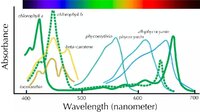Hi Folks,
For those people who would like to know more about the spectrum of light being emitted from whatever aquarium lighting you own, the i-Phos Spectrometer is a great piece of kit. I've been using one of these for about a year and I wouldn't be without it. This is it:
http://chriswesley.org/spectrometer.htm?ref=DIYLightSpectrometerDescription5
It's basically a 40cm long tube with some optical components (including a webcam) inside it. And, it plugs into a USB port on your Windows PC. The only problem that I had when first setting mine up was webcam driver compatibility. I ran into problems on my old Dell laptop. But, my wife's old HP laptop (Windows 10) then came to the rescue. The i-Phos uses some software known as Theremino Spectrometer, which can be installed from:
https://www.theremino.com/en/downloads/automation#spectrometer
The guy that makes the i-Phos, Chris Wesley, is very helpful.
It is necessary to calibrate the i-Phos before use and the Theremino software has provision for this. It is possible to use a compact fluorescent lamp (CFL) - remember them? But, I bought a selection of seven LEDs that span the visible spectrum from 400nm - 700nm. More about these in a later post.
Attached is a sample spectrum from my setup.
And, finally, the price. It will set you back around £75. A bargain.
JPC

For those people who would like to know more about the spectrum of light being emitted from whatever aquarium lighting you own, the i-Phos Spectrometer is a great piece of kit. I've been using one of these for about a year and I wouldn't be without it. This is it:
http://chriswesley.org/spectrometer.htm?ref=DIYLightSpectrometerDescription5
It's basically a 40cm long tube with some optical components (including a webcam) inside it. And, it plugs into a USB port on your Windows PC. The only problem that I had when first setting mine up was webcam driver compatibility. I ran into problems on my old Dell laptop. But, my wife's old HP laptop (Windows 10) then came to the rescue. The i-Phos uses some software known as Theremino Spectrometer, which can be installed from:
https://www.theremino.com/en/downloads/automation#spectrometer
The guy that makes the i-Phos, Chris Wesley, is very helpful.
It is necessary to calibrate the i-Phos before use and the Theremino software has provision for this. It is possible to use a compact fluorescent lamp (CFL) - remember them? But, I bought a selection of seven LEDs that span the visible spectrum from 400nm - 700nm. More about these in a later post.
Attached is a sample spectrum from my setup.
And, finally, the price. It will set you back around £75. A bargain.
JPC




